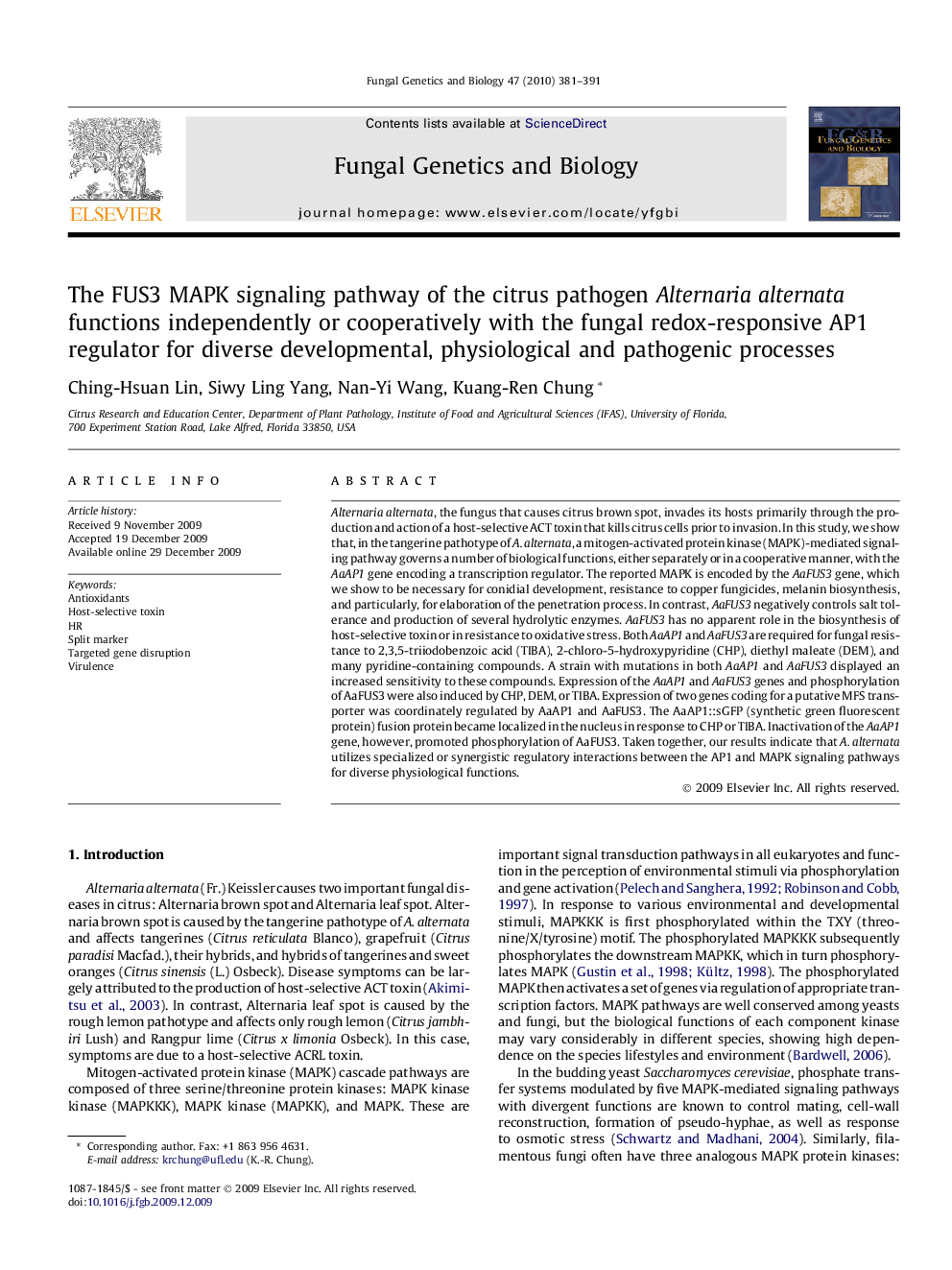| کد مقاله | کد نشریه | سال انتشار | مقاله انگلیسی | نسخه تمام متن |
|---|---|---|---|---|
| 2181109 | 1095267 | 2010 | 11 صفحه PDF | دانلود رایگان |

Alternaria alternata, the fungus that causes citrus brown spot, invades its hosts primarily through the production and action of a host-selective ACT toxin that kills citrus cells prior to invasion. In this study, we show that, in the tangerine pathotype of A. alternata, a mitogen-activated protein kinase (MAPK)-mediated signaling pathway governs a number of biological functions, either separately or in a cooperative manner, with the AaAP1 gene encoding a transcription regulator. The reported MAPK is encoded by the AaFUS3 gene, which we show to be necessary for conidial development, resistance to copper fungicides, melanin biosynthesis, and particularly, for elaboration of the penetration process. In contrast, AaFUS3 negatively controls salt tolerance and production of several hydrolytic enzymes. AaFUS3 has no apparent role in the biosynthesis of host-selective toxin or in resistance to oxidative stress. Both AaAP1 and AaFUS3 are required for fungal resistance to 2,3,5-triiodobenzoic acid (TIBA), 2-chloro-5-hydroxypyridine (CHP), diethyl maleate (DEM), and many pyridine-containing compounds. A strain with mutations in both AaAP1 and AaFUS3 displayed an increased sensitivity to these compounds. Expression of the AaAP1 and AaFUS3 genes and phosphorylation of AaFUS3 were also induced by CHP, DEM, or TIBA. Expression of two genes coding for a putative MFS transporter was coordinately regulated by AaAP1 and AaFUS3. The AaAP1::sGFP (synthetic green fluorescent protein) fusion protein became localized in the nucleus in response to CHP or TIBA. Inactivation of the AaAP1 gene, however, promoted phosphorylation of AaFUS3. Taken together, our results indicate that A. alternata utilizes specialized or synergistic regulatory interactions between the AP1 and MAPK signaling pathways for diverse physiological functions.
Journal: Fungal Genetics and Biology - Volume 47, Issue 4, April 2010, Pages 381–391